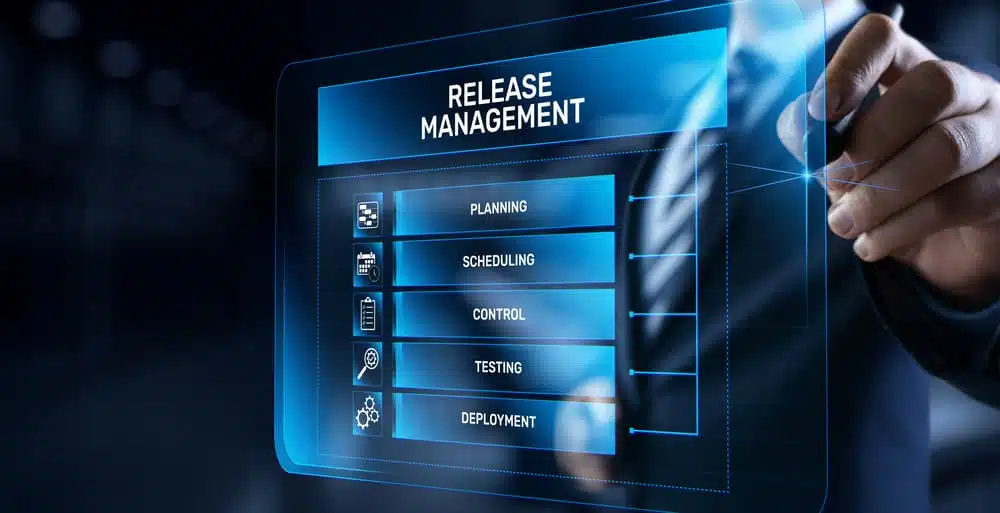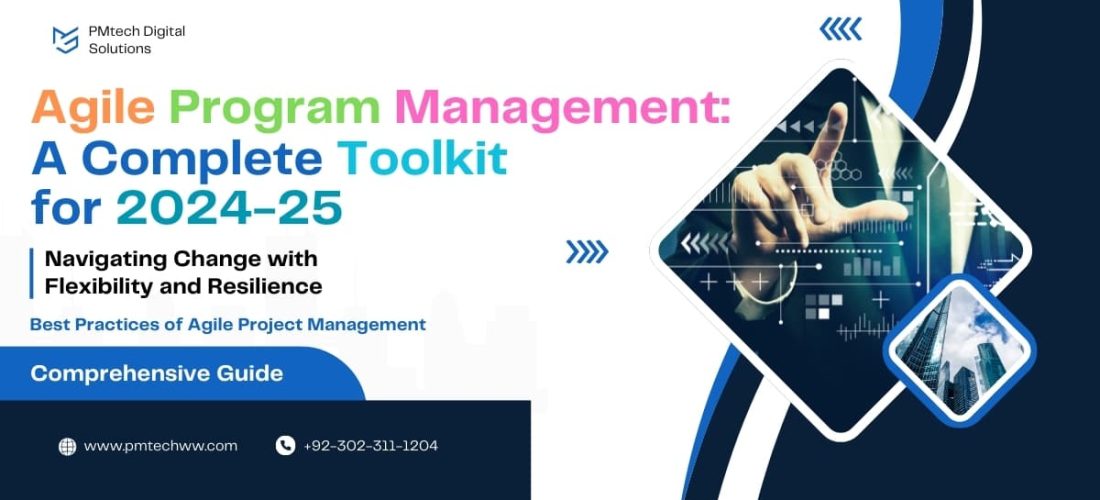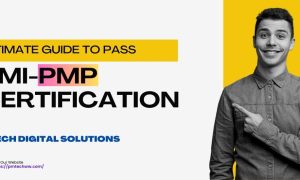Agile Program Management applies Agile principles to manage programs flexibly and adapt quickly to changes. It contrasts with traditional project management by constantly aligning with evolving needs and delivering continuous value. This article will explain the essentials, key components, and benefits of agile program management, helping you implement agile program management and enhance your project outcomes effectively.
Key Takeaways
Agile Program Management integrates Agile principles into program management, prioritizing customer value and adaptability over rigid processes.
Key components for success include Iterative Planning, Stakeholder Engagement, and Continuous Feedback Loops which ensure alignment with evolving project goals.
Implementing Agile requires a structured approach including team training, iterative adjustments, and alignment with organizational objectives for optimal outcomes. Ensuring that project teams are well-coordinated and their data stays synchronized is crucial for achieving these goals.
Understanding Agile Program Management

Program management infused with agile principles—called Agile Program Management—is a strategic methodology that incorporates the agility of agile practices within the wider scope of program management. Contrasting traditional project management, which typically focuses on strict adherence to predetermined deliverables and timelines, Agile Program Management is crafted for flexibility and adaptability, allowing rapid adjustments in response to evolving project requirements and shifting stakeholder expectations. This adaptable nature is imperative in our current fast-paced business landscape, where the swift implementation of an agile program can be pivotal for a project’s triumph or downfall.
Agile Program Management places significant emphasis on maximizing customer value above all other objectives. This orientation towards customer satisfaction means prioritizing responsiveness over mere process efficiency and dependability. By engaging stakeholders consistently and refining product iterations continually, agile teams remain attuned to what is most pressing for both businesses and their clients at any given moment.
For successful execution within this paradigm shift from conventional methods toward Agile Program Management, it requires an effective governance architecture. Such framework must facilitate informed decision-making while supporting early frequent delivery—a signature characteristic of Agile methodologies—which enables teams to better fulfill client demands while mitigating late development phase risks significantly.
In essence, measuring success when employing an Agile approach hinges on how well teams can anticipate client needs and provide functional solutions expediently, rendering it exceptionally suited for navigating today’s rapidly changing marketplace conditions.
Key Components of Agile Program Management
To consistently deliver value, Agile Program Management relies on essential elements that must work together seamlessly. These elements are iterative planning, stakeholder engagement, and continuous feedback loops. To fully leverage Agile methodologies, organizations need to comprehend and implement these crucial components.
Comprising individuals from different functional areas working in unison to increase responsiveness and accelerate delivery, agile teams form the backbone of this approach. The importance of their cross-functional nature cannot be overstated as it allows for a comprehensive response to the varied challenges encountered during project execution. An excellent manifestation of such teamwork is seen within an Agile Release Train (ART), where numerous agile teams align their efforts towards shared goals.
Organizations Benefit from adopting the Scaled Agile Framework (SAFe), which effectively organizes and coordinates interrelated projects among various agile teams ensuring synchronized progression throughout the program.
These aspects will each receive detailed consideration – discussing how iterative planning facilitates adaptability, ways in which Stakeholder Engagement ensures alignment with user needs, and why Continuous Feedback Loops are pivotal for maintaining relevance – all fundamental for upholding effectiveness within Agile Program Management aligned with overarching organizational objectives.
Iterative Planning
Program management within Agile teams is predicated on the iterative approach, enabling them to adjust swiftly and stay in tune with shifting program goals. This method stands in contrast to conventional program management strategies that tend to follow a set sequence of actions. Agile instead advocates for regular iterations that support ongoing refinement and adaptation. Such adaptability ensures continued relevance and efficiency amidst dynamic conditions.
In order to maintain effective responsiveness to changing needs, agile teams align their planning efforts every 8-12 weeks through synchronization activities. By doing so, they guarantee consistency among team members’ understanding of objectives and direction.
More than simply reacting to change, iterative planning continuously realigns project initiatives with overarching program goals. It’s an essential practice for keeping the venture aligned with its intended path while delivering outcomes that meet expectations.
Stakeholder Engagement
Stakeholder Engagement is a vital aspect of Agile Program Management, wherein consistent interaction with stakeholders allows their insights to be integrated at all stages of the project’s duration. This process secures a more precise convergence with stakeholder anticipations and requirements, affirming that the outcomes produced remain pertinent and beneficial.
To guarantee potent Stakeholder Engagement within an agile framework, frequent exchanges and teamwork are imperative. These practices serve to synchronize the objectives of the project with what stakeholders envision. Through fostering an environment steeped in cooperation, Agile teams have the capability to modify their course according to feedback from stakeholders – this not only boosts contentment but also drives towards triumphant realization of projects.
Continuous Feedback Loops
In Agile Program Management, the implementation of Continuous Feedback Loops is crucial as they facilitate immediate enhancements and modifications during the program’s lifecycle. Regular retrospectives and review meetings are common practices where teams can swiftly recognize challenges and resolve them.
Such mechanisms for ongoing feedback guarantee that targets stay in sync with shifting business objectives, thereby enhancing organizational value significantly. The iterative nature inherent to this feedback process enables teams to perpetually polish their methodologies, leading to an elevation in their general efficacy.
Roles and Responsibilities in Agile Program Management
In Agile Program Management, a thorough grasp of the distinct roles and responsibilities is crucial for addressing all aspects of project execution effectively. The role of the Agile Program Management Office (PMO) is to synchronize individual projects with broader program objectives while tackling organizational challenges and providing necessary tools and insights for keeping projects in line with the needs of the program.
Crucial positions within Agile Program Management include those of the Program Manager, Product Manager, and Release Train Engineer. These individuals play pivotal roles in guaranteeing that value delivery stays consistent with strategic aims throughout the agile program.

Each function demands specialized knowledge ranging from generating value to conducting software development or resolving technical intricacies. Depending on what an agile program necessitates in terms of expertise, there might be variability in which specific roles are needed to meet its goals successfully.
Program Manager
A Program Manager in Agile Program Management coordinates schedules among several projects and teams to ensure efficient collaboration and alignment with strategic objectives. This role is crucial for maintaining the overall direction and coherence of the program and project managers work.
Program Managers identify trends in impediments and devise permanent solutions. This proactive approach helps in addressing systemic problems and ensuring the smooth progress of the program.
Product Manager
In Agile Program Management, a Product Manager’s responsibility is to steer the development of products by prioritizing features that offer the most value to customers. They are tasked with continually refining and adjusting the product roadmap so that it aligns with customer demands and supports business objectives.
Product Managers have an essential role in synchronizing the developmental workflow with broader company aims, making sure that strategic targets are hit and that products provide optimal value toward achieving these goals.
Release Train Engineer
Release Train Engineers (RTEs) serve as pivotal leaders and coaches for Agile teams, orchestrating events and procedures associated with the Agile Release Train (ART). Their fundamental role is to guarantee that these teams operate in a manner that is both effective and efficient in pursuit of their goals.
By conducting key events and offering coaching guidance to team members, RTEs bolster the performance of Agile teams. They are instrumental in sustaining the pace and ensuring the synchronization within the Agile Release Train framework.
Agile Governance and Decision-Making
Agile governance and decision-making are crucial components of Agile program management. They ensure that Agile teams are aligned with the organization’s overall strategy and goals, and that decisions are made in a timely and effective manner. Effective governance structures and decision-making processes are essential for maintaining the agility and responsiveness that are the hallmarks of Agile methodologies.
Frameworks: SAFe, AgilePgM, and Others
Several frameworks are available to support Agile governance and decision-making, including SAFe (Scaled Agile Framework), AgilePgM (Agile Program Management), and others. These frameworks provide a structured approach to Agile governance and decision-making, and can be tailored to meet the specific needs of an organization.
SAFe, for example, provides a comprehensive framework for scaling Agile to the enterprise level. It includes a governance model that defines the roles and responsibilities of various stakeholders, ensuring that decision-making is both efficient and aligned with strategic objectives. AgilePgM, on the other hand, offers a framework specifically designed for managing Agile programs. It emphasizes the importance of stakeholder engagement and decision-making, ensuring that all voices are heard and that decisions are made collaboratively.
By utilizing these frameworks, organizations can establish a robust governance structure that supports Agile program management and ensures that all teams are working towards common goals.
Governance Structure and Roles
An effective Agile governance structure should include clear roles and responsibilities for various stakeholders, including program managers, project managers, and team members. The governance structure should also define the decision-making processes and escalation procedures for resolving conflicts or issues.
In an Agile program management context, the governance structure may include roles such as:
Program Manager: Responsible for overseeing the program and ensuring that it is aligned with the organization’s overall strategy and goals. The program manager coordinates multiple projects and ensures that they contribute to the broader business objectives.
Project Manager: Manages individual projects within the program, ensuring that they are delivered on time, within budget, and to the required quality standards. Project managers work closely with teams to keep projects on track.
Team Members: Responsible for delivering the project work and collaborating with other team members to ensure successful project delivery. Their input is crucial for iterative planning and continuous improvement.
By clearly defining these roles and responsibilities, organizations can ensure that everyone understands their part in the Agile program and that decision-making processes are streamlined and effective.
Decision-Making Processes
Agile decision-making processes should be collaborative, iterative, and incremental. They should involve all relevant stakeholders and focus on delivering value to the customer. In an Agile program management context, decision-making processes may include:
Iterative Planning: Involving stakeholders in the planning process to ensure that everyone is aligned and aware of the project goals and objectives. This helps in making informed decisions that reflect the current needs and priorities.
Continuous Integration: Integrating the work of multiple teams to ensure that the project is delivered successfully. This process helps in identifying and resolving issues early, ensuring that the final product meets the desired quality standards.
Retrospectives: Holding regular retrospectives to review progress, identify areas for improvement, and make adjustments to the project plan as needed. This iterative approach ensures that the team can adapt to changes and continuously improve their processes.
By implementing these decision-making processes, organizations can ensure that their Agile programs remain flexible and responsive to changing needs, ultimately delivering greater value to their customers.

Agile Program Management Office (PMO)
An Agile Program Management Office (PMO) is a centralized function that provides support and guidance to Agile program managers and teams. The PMO is responsible for ensuring that Agile programs are delivered successfully and that they are aligned with the organization’s overall strategy and goals. By offering a structured approach to program management, the Agile PMO plays a crucial role in the successful implementation of Agile methodologies.
Focus and Responsibilities
The focus of the Agile PMO is on providing support and guidance to Agile program managers and teams, ensuring that Agile programs are delivered successfully. The responsibilities of the Agile PMO may include:
Providing Training and Coaching: Offering training and coaching to Agile program managers and teams to ensure they have the necessary skills and knowledge to implement Agile practices effectively.
Developing and Maintaining Processes: Creating and maintaining Agile program management processes and procedures that support the successful delivery of Agile programs.
Supporting Program Managers and Teams: Providing ongoing support and guidance to Agile program managers and teams, helping them navigate challenges and stay aligned with organizational goals.
Ensuring Strategic Alignment: Ensuring that Agile programs are aligned with the organization’s overall strategy and goals, and that they contribute to the achievement of business objectives.
Monitoring and Reporting: Monitoring the performance of Agile programs and reporting on their progress to stakeholders. This includes identifying areas for improvement and making recommendations for enhancing program performance.
The Agile PMO may also be responsible for developing and maintaining Agile program management metrics and dashboards, providing insights and recommendations to stakeholders on how to improve Agile program performance. By focusing on these responsibilities, the Agile PMO helps ensure that Agile programs are delivered successfully and that they contribute to the organization’s overall success.
Implementing Agile Program Management
The process to implement Agile program management is comprehensive, necessitating a series of deliberate actions that foster the seamless adoption and effective execution of Agile tenets. Created by APMG International in collaboration with the Agile Business Consortium, the AgilePgM framework assists in navigating transformational change adeptly.
Embarking on this approach to program management requires adherence to six essential steps:
Collecting initial data
Conducting training for teams
Making iterative modifications
Formulating explicit goals
Crafting frameworks for success measurement
Ensuring strategic coherence
These methodical stages aid in embedding agile methodologies into program delivery practices effectively.
For scaling agile across various teams within an organization, it’s imperative to have a robust technological infrastructure aligned with such expansive objectives—tools like Enterprise Kanban systems prove invaluable as they enable orchestration amongst numerous agile teams, offering visual representations of workflows, pinpointing interdependencies, spotlighting potential hindrances and encouraging crucial dialogue throughout different levels of management.
Training Teams
Training in Agile methodologies improves the collaboration and flexibility of teams. This training ensures that planning sessions, typically limited to 90 minutes for a two-week sprint, are concise and keep team objectives synchronized.
By conducting consistent training workshops, teams can deepen their understanding of Agile concepts and techniques. These educational efforts prepare them thoroughly to execute an agile program with proficiency in management practices.
Adjusting Iteratively
Agile teams are built on the principle of an iterative approach, which empowers them to enhance their processes and outputs through regular revisions grounded in persistent feedback. This methodology is crucial as it ensures that teams can perpetually realign with organizational objectives while elevating their efficiency.
The constant stream of feedback plays a pivotal role for Agile teams by facilitating timely modifications essential for maintaining alignment with program aims. During iteration planning, these teams pledge to achieve specific goals within the forthcoming iteration, taking into account both their capacity and refined backlog items.
Ensuring Alignment
For effective program management in an Agile setting, it is imperative to synchronize the goals of the program with the broader aims of the organization. Employing a SAFe roadmap template aids in establishing transparent benchmarks for achieving milestones within product development.
It is vital to continually reassess and modify approaches to ensure they stay congruent with changing organizational objectives, which improves consistency among different teams and projects.
Benefits of Agile Program Management

Utilizing an agile program management approach can greatly enhance a team’s ability to be flexible and adaptable. With agility at the core, teams are equipped to rapidly adjust during brief development cycles known as sprints, which promotes the regular delivery of value.
Illustrative case studies from prominent organizations like PayPal, Cisco, and Philips underscore the significant changes brought about by Agile methods. For instance, after adopting Scrum techniques, PayPal was able to introduce 58 new products within a half-year period. Meanwhile, through its adoption of SAFe (Scaled Agile Framework), Cisco witnessed a remarkable 40% decrease in product defects along with an uptick in employee morale. Similarly, Philips managed to slash its software release timeframe dramatically from one-and-a-half years down to merely six months.
By prioritizing ongoing enhancements and bolstering customer engagement throughout their processes with Agile principles in mind, businesses typically see enhanced levels of client contentment alongside improved outcomes for their operations. This is achieved by establishing unambiguous objectives while periodically reviewing them so that teams maintain consistent forward momentum towards sustained progressions toward success.
Challenges and Solutions in Agile Program Management
Despite the advantages of Agile Program Management, it is not without its difficulties. A lack of dedicated leadership support can undermine an organization’s shift toward Agile practices. Challenges such as insufficient collaboration and cultural barriers must also be tackled.
Issues stemming from outdated systems and flawed implementation strategies have been known to impede the progress towards adopting agile methodologies, implying that introducing changes incrementally could yield better results. Misunderstandings between teams due to poor communication are another source of potential project setbacks, underscoring the importance of transparent and continuous dialogue.
Financial complications often emerge in organizations transitioning to an Agile framework because of its inherent iterative nature. This calls for improved coordination with financial departments. Companies should refrain from mandating a uniform adoption of new tools across all teams when they may disrupt workflows that currently perform well.
Managing Dependencies
Ensuring smooth operation of Agile projects requires proper management of dependencies. This necessitates the recognition and classification of various types of dependencies, including those related to technical aspects or business processes, with the aim of making them transparent across teams.
By holding frequent collaborative sessions, agile teams are prompted to uncover interconnected elements spanning multiple projects. By embracing automation strategies for tasks that are repetitively associated with managing these dependencies, significant time savings can be achieved.
Cultural Shifts
Successfully implementing Agile demands a shift in corporate culture, which could be hampered by resistance from employees and their insufficient grasp of the concept. Fostering an atmosphere that promotes transparent communication can help smooth the path toward embracing Agile methodologies.
Continuous input from stakeholders is crucial for honing both the processes and results associated with Agile, confirming that this cultural transformation is in sync with overarching business objectives.
Maintaining Momentum
Ensuring steady progress in Agile methodologies is vital for reliable delivery and enhancing team cooperation. Engaging consistently in practices like daily stand-ups and sprint reviews is crucial to keep the momentum of Agile strong as time passes.
Fostering active participation among team members by offering ongoing learning experiences fosters flexibility and strengthens the core culture of Agile, which leads to increased efficiency and closer alignment with organizational objectives.
Best Practices for Utilizing Agile Methodologies in Program Management

It is essential to incorporate exemplary methods for proficient management of an Agile program. By segmenting projects into more manageable, shorter phases, as recommended by Agile methodologies, there’s a facilitation of steady advancement and enhanced oversight. The characteristic transparency of Agile approaches coupled with consistent feedback loops significantly bolsters project governance, offering greater clarity on potential risks and how they can be mitigated.
Employing appropriate measurements while actively involving all team members helps demystify each person’s responsibilities within the team structure. This collaborative dynamic not only strengthens group synergy but also contributes to the delivery of products that are distinguished by their exceptional quality.
Tools and Technologies for Agile Program Management
Effective Agile Program Management relies on the right tools and technologies. Agile program managers often use agile project management tools to enhance coordination and track project progress effectively in their portfolio management, particularly in project and program management. These tools ensure that project teams remain aligned and their data stays synchronized.
Visual management tools like Kanban boards improve workflow transparency and team alignment, while enterprise Kanban tools help visualize dependencies in Agile projects.
Collaboration platforms such as Confluence, Zoom, and Loom enable teams to manage knowledge, track feedback, conduct remote standups, and share updates asynchronously, ensuring continuous alignment and progress.
Summary
PMtech Digital Solutions Agile Program Management offers a flexible and responsive approach to managing complex projects, focusing on delivering value through iterative planning, stakeholder engagement, and continuous feedback loops. Key roles like Program Manager, Product Manager, and Release Train Engineer ensure that all aspects of the program are effectively managed.
By implementing best practices, leveraging the right tools, and learning from real-world success stories, organizations can achieve transformational change and drive successful program delivery. Agile methodologies not only improve project outcomes but also enhance team collaboration, customer satisfaction, and overall business performance.
Frequently Asked Questions
What are the core principles of Agile Program Management?
The core principles of Agile Program Management are active stakeholder engagement, incremental goals, iterative delivery, and employee empowerment. Embracing these principles fosters collaboration and adaptability throughout the project lifecycle.
How does Agile Program Management differ from traditional project management?
In contrast to traditional project management, which relies on fixed frameworks and set procedures, Agile Program Management focuses on adaptability and agility, giving higher importance to delivering value rather than simply achieving efficiency.
What is the role of a Release Train Engineer in Agile Program Management?
An RTE is instrumental in Agile Program Management, as they guide and mentor Agile teams. They also ensure smooth functioning of the Agile Release Train by orchestrating events and processes aimed at maximizing performance.
This leadership role fosters strong cooperation and synchronization among different teams to achieve collective success.
How can organizations manage dependencies in Agile projects?
To manage dependencies in Agile projects, organizations should identify and categorize dependencies, hold regular collaborative meetings, and leverage automation to minimize repetitive tasks.
This approach enhances efficiency and collaboration within the team.
What tools are essential for Agile Program Management?
For effective Agile Program Management, essential tools include project management software for tracking, Kanban boards for visual management, and collaboration platforms like Confluence, Zoom, and Loom. These tools facilitate coordination and enhance team communication.




